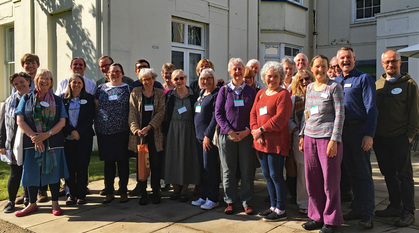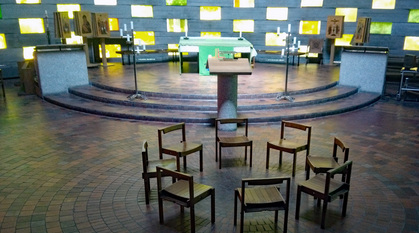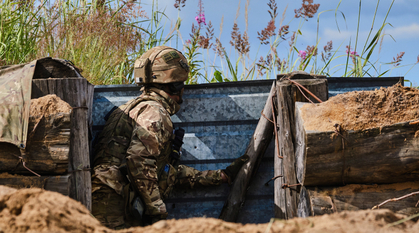The women of Swarthmoor Hall
Lucy Saint-Smith shares the stories of four of the women of Swarthmoor Hall whose lives and work were central to the success of the early Quaker movement.
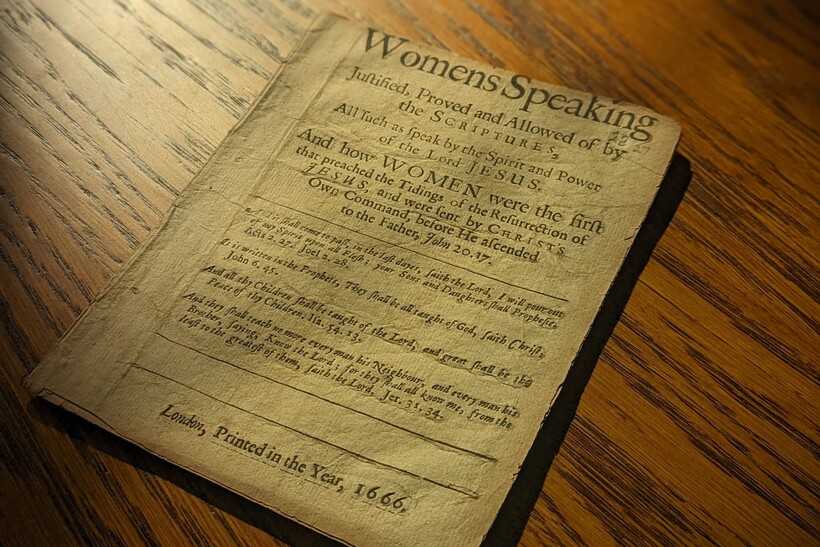
Swarthmoor Hall in Lancashire was the centre of early Quakerism. It overcame raids by the local constabulary, complaints from the neighbours and a long-running dispute over ownership to provide an information hub, a safe haven for travelling Friends and a place for worship.
This was all made possible by the work of several brave, talented and driven women who defied the conventions of their time to pursue their faith. In celebration of International Women's Day, here are stories about four of them:
1. Margaret Fell (1614-1702)
Margaret Fell was a courageous and intelligent woman who did not shy away from putting everything on the line for her beliefs. She is sometimes called the 'mother of Quakerism'.
Margaret came to Swarthmoor Hall aged 17 to marry Judge Thomas Fell. They had a happy marriage and 9 children together. They were socially respected, and well-off. In 1652 Margaret heard George Fox, an itinerant preacher and her house guest, speak at her church. She was convinced of the truth of his words, and her life changed from that of a comfortable gentlewoman to that of a religious and political radical.
[QUOTE-START]
I cried in my spirit to the Lord, 'We are all thieves, we are all thieves, we have taken the Scriptures in words and know nothing of them in ourselves'…
- Margaret Fell, Quaker faith & practice 19.07
[QUOTE-END]
She became the centre of information, receiving intelligence about Quaker activities from around the country and co-ordinating travelling preachers. She became the society's chief fundraiser, organising the Kendal Fund to support Friends in prison and exhorting more fortunate Friends to give aid where they could.
After the restoration of the monarchy, she travelled to London to advocate for Friends with Charles II. She delivered to him the first public articulation of the Quaker Peace Testimony, in her pamphlet A declaration and an information from us the people of God called Quakers. She worked with George Fox and others to establish the Quaker way of doing things, creating a culture of meetings and discernment that still exists today.
All this work came at a personal cost. She was well known and became a target for vitriolic attacks and slanderous gossip from those who were against Quakerism, particularly against women's prominent role in the movement. In line with her conscience, she refused to pay tithes and continued to hold illegal Quaker meetings at Swarthmoor Hall. As a result, she was arrested multiple times and spent 5 years in prison. She also had all her assets, including ownership of Swarthmoor Hall, stripped from her.
2. Bridget Fell (1635-1663)
The second daughter of Margaret Fell, Bridget also became a Quaker during George Fox's visit in 1652. When Margaret went to London to see the king, 25-year-old Bridget was given temporary responsibility for the Swarthmoor estate and her younger sisters.
The recently returned king was cracking down on Quakers and other radical groups. Bridget's letters to her mum evoke the terrifying experience of having armed men come to their house and rifle through their belongings, confiscating property and arresting the men who worked there. Bridget's calm courage in managing this situation is representative of many Quakers of her time.
3. Sarah Fell (1642-1714)
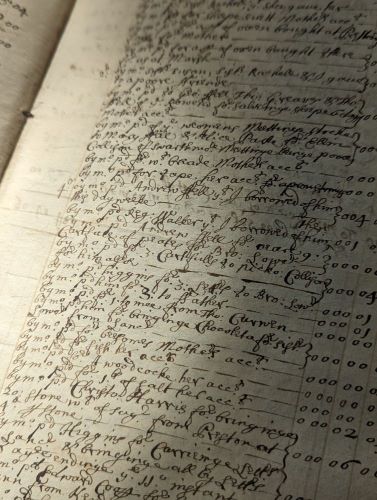
Sarah was Margaret's fifth child. She was very intelligent, kept up a correspondence with many of the well-known Quakers of her day and taught herself to read Hebrew.
She is best known for her brilliant record keeping. When Margaret first went to prison in 1664, as the eldest unmarried child, she took on management of the Swarthmoor estate. Her account book is a rare survival, painting a vivid picture of life at the hall, including their tastes in food, drink and clothes, expenses incurred by her own brief imprisonment and the return of George Fox in 1675.
There are few records of women's meetings in the 17th century, but the three that Sarah clerked (Swarthmoor, London Box Meeting and Barking Meeting) all have surviving record books. Her meticulous writing gives us an insight into the day-to-day life of early Quaker women and has made her well known among historians.
4. Ann Clayton (c.1628-1707)
Ann was a servant at Swarthmoor Hall when George Fox came to visit in 1652 and was among those convinced. She believed she was called to leave her position at Swarthmoor Hall and carry the Quaker message around the world, no matter the cost to herself.
She travelled first around England, standing up in public places and making herself heard. As a 17th century woman, this was a particularly radical act. She found herself in prison multiple times, and in 1655 was publicly whipped as punishment.
In later life, she sailed to Barbados and on to North America, where she settled in Rhode Island. She married twice, and both of her husbands became Governors of Rhode Island. Her home became a reflection of Swarthmoor Hall, the venue for Newport meeting and a haven for travelling Friends. George Fox stayed with her when he visited in 1672.
Swarthmoor Hall is re-opening at the end of March after extensive restoration works to the hall and gardens. To find out more about it, visit www.swarthmoorhall.co.uk.
